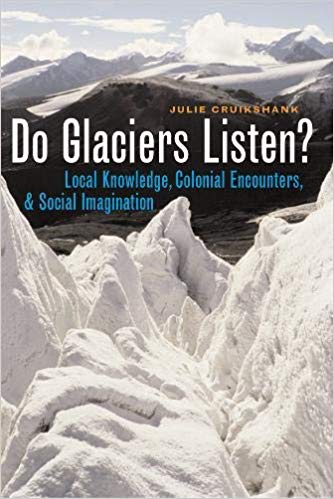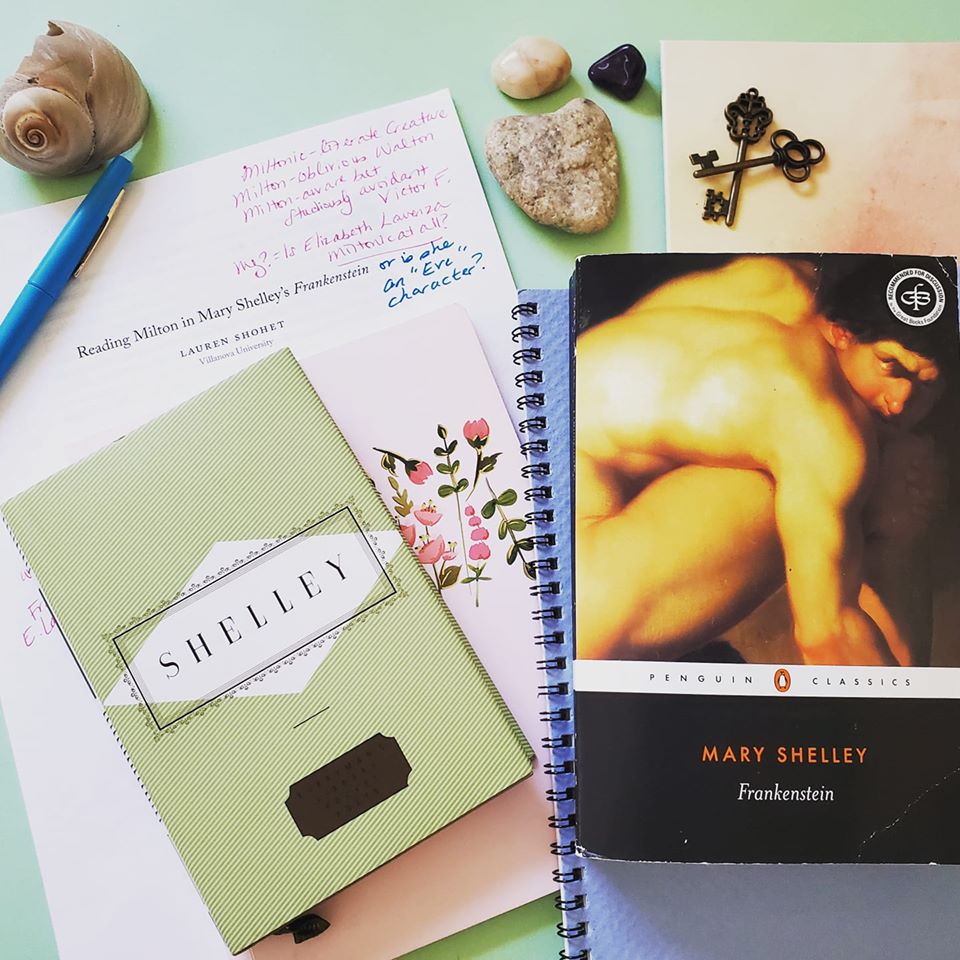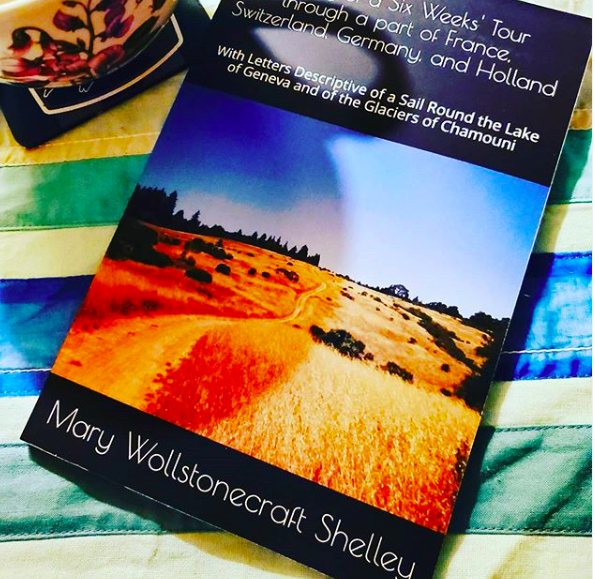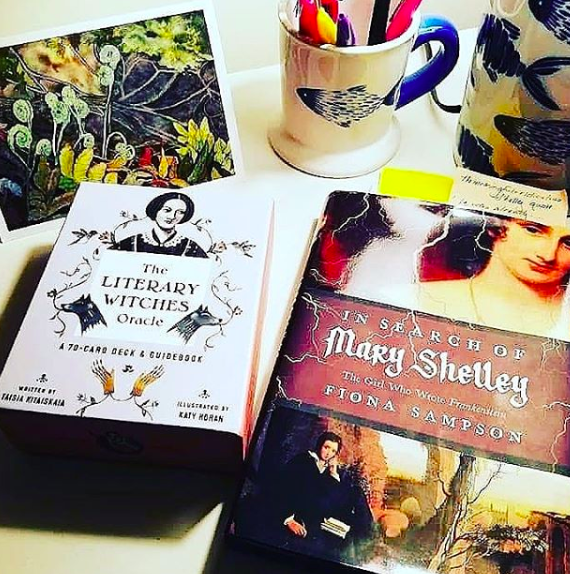Lately I’ve been thinking about glaciers. I re-watched “Chasing Ice,” which is a fascinating documentary film with the first large-scale ground survey of glaciers, directed by Jeff Orlowski and led by photographer James Balog. I’m sure you’ve seen Balog’s incredible documentary films on PBS/NOVA if not “Chasing Ice” or his photography in National Geographic.
Thinking of glaciers as “social spaces” allows us to consider the effects of climate change on the cryosphere—the frozen layers of the Earth, including glaciers and permafrost, from a variety of perspectives. We can examine glaciers as “social spaces” by exploring the ethnography of oral history traditions in the Yukon Territory, the socio-economic impacts, such as the melting of the cryosphere, in those ‘social spaces’ in Alaska, as another example. Additionally, we can explore glaciers as social spaces in literary ecology and contemporary music. How do glaciers “listen?” I explore a few ways below.
 The senior women of the Saint Elias Mountain region of the southern Yukon Territory (Canada) relayed complex natural and social histories to anthropologist Julie Cruikshank when she did ethnographic research recording the life stories of Athapaskan and Tlingit elders. Her book, Do Glaciers Listen?: Local Knowledge, Colonial Encounters, and Social Imagination was published in 2005 (Paperback edition, 2010) but I think it’s still highly relevant. She found that the elders, “grounded precise social histories of twentieth-century life within a scaffolding of much older narratives. [They drew] on established long narrative conventions to reflect on complex life circumstances. In the words [of one elder] Angela Sidney, ancient narratives had helped her to ‘live life like a story.’” (Cruikshank, 2005) Cruikshank, while living with the elders, “heard narratives about glacial caves inhabited by intemperate beings that might emerge unexpectedly: and others that depicted glaciers as living and responsive themselves. Stories dramatized […] bursting of ice-dammed lakes into river valleys, and […] told stories of travel […] sometimes crossing crevasse-ridden glaciers on foot and sometimes piloting hand-hewn cottonwood boats beneath glacial bridges…” (Cruikshank, 2005) They told stories of strangers called “cloud people.” (Cruikshank, 2005) The women’s stories depicted a “winter world” that crossed economic borders, of coastal Tlingit traders, and the shifting power relations described by economic historian Howard Innis on the 19th century market for furs, gold, cod and timber. (Cruikshank, 2005) Cruikshank’s writing is wonderfully evocative of the culture and arctic wonder.
The senior women of the Saint Elias Mountain region of the southern Yukon Territory (Canada) relayed complex natural and social histories to anthropologist Julie Cruikshank when she did ethnographic research recording the life stories of Athapaskan and Tlingit elders. Her book, Do Glaciers Listen?: Local Knowledge, Colonial Encounters, and Social Imagination was published in 2005 (Paperback edition, 2010) but I think it’s still highly relevant. She found that the elders, “grounded precise social histories of twentieth-century life within a scaffolding of much older narratives. [They drew] on established long narrative conventions to reflect on complex life circumstances. In the words [of one elder] Angela Sidney, ancient narratives had helped her to ‘live life like a story.’” (Cruikshank, 2005) Cruikshank, while living with the elders, “heard narratives about glacial caves inhabited by intemperate beings that might emerge unexpectedly: and others that depicted glaciers as living and responsive themselves. Stories dramatized […] bursting of ice-dammed lakes into river valleys, and […] told stories of travel […] sometimes crossing crevasse-ridden glaciers on foot and sometimes piloting hand-hewn cottonwood boats beneath glacial bridges…” (Cruikshank, 2005) They told stories of strangers called “cloud people.” (Cruikshank, 2005) The women’s stories depicted a “winter world” that crossed economic borders, of coastal Tlingit traders, and the shifting power relations described by economic historian Howard Innis on the 19th century market for furs, gold, cod and timber. (Cruikshank, 2005) Cruikshank’s writing is wonderfully evocative of the culture and arctic wonder.
Glaciers, according to the stories, radiate heat and energy. They’re alive. Cruikshank pores into the Athapaskan elders’ stories like a glaciologist drills an ice core, studying its layers, noting the environmental, geophysical changes in a glacier—which tells a social story, since glaciers are part of the Athapaskan and Tlingit life stories. The Little Ice Age (1550-1850) is within reach of the memories of Athapaskan and Tlingit elders; some of their stories are memory and some, myth. After the Little Ice Age, the glaciers receded enough to make coastal lands accessible to Eyak, Tlingit, and Athapaskan nations to converge. Stories map the geography and human ecology of the glaciers and the ecological and social corridors connecting glaciers. Through the study of oral histories, we can glean that “glaciers present some navigational, spiritual, and intellectual challenges of a sentient “land that listens.” (Cruikshank, 2005) This is what is known as sentient ecology. (Ingold, 2000) This is what the elders explained to Cruikshank when they told her stories about glaciers listening and responding.
Similarly, a human ecologist could study the environmental changes, such as those impacts from global climate change on glaciers and permafrost, two related ecosystems, and their ecological place in our world—both as social spaces and quintessential geophysical, temporal yardsticks with which we measure global environmental change. These stories, from oral tradition, captured local traditional knowledge of the Saint Elias Mountain region of southern Yukon, and other parts of Canada, and the stories themselves seemed to shift and transform infinitesimally much like the glaciers. One of the elders, Annie Ned, told stories of “caribou ‘blackening the ice’ on nearby lakes early in the (20th) century.” (Cruikshank, 2005) When Cruikshank and Shelia Greer prepared a report on the region’s oral history for the Archaeological Survey of Canada, Ned’s story about the caribou became important in another context: “Scientists reporting discoveries of ancient tools and caribou droppings melting from a high alpine ice patch above [Ned’s] trapline cited her oral account in their initial scientific paper on prehistoric caribou.” (Cruikshank, 2005) Thus, the oral histories were not solely cultural translations and transcriptions of the women’s life stories; the stories were also part of a larger natural history of the region. Also, the issue of personhood comes into play: these women tell stories that “summon up a moral system that includes relationships with non-humans – animals and also features of the landscape, like glaciers – that share characteristics of personhood.” (Cruikshank, 2005) I am intrigued by the idea of personhood, the Rights of Nature movement, and an old idea—perhaps ancient, and pan-human, of connecting with land and water—the way headwater streams braid and combine to form a stream, intermittent or ephemeral—after storms, and each stream tells a story as it carves through sediment in the streambed. Similarly, anthropologists and human ecologists study the layers of permafrost, or analyze the many ways to tell a story about navigating a crevice in a glacier—the successful and failed rescue attempts, in order to discover the human dimensions of that glacial ecology. Literary ecologists seek to find meaning in the stories of the ways in which people interact with the natural world, including glaciers.
In Mary Shelley’s novel, Frankenstein (1818), she begins and ends the famous story about the mad-scientist, Victor Frankenstein, a graduate student from Geneva, and his creation, a Monster, comprised of human parts reanimated by electricity—on a glacier in the Arctic. At the start of the novel, a ship captain writes to his sister about encountering a strange man, crossing the ice on a sled, totally bereft but driven by a vengeance to confront his creation, the Monster, who fled to the “Land of Mist and Snow,” the glacial Alps, because he wanted a refuge from the cruelty of mankind. At the end of the novel, the reader rejoins Victor and the Monster, as they have one final showdown on the glacier. In Shelley’s real life, she and her fiancé Percy B. Shelley, had traveled through the region of Mont Blanc, home to Mer de Glace, the second largest glacier in the Alps in 1816. Later, while pregnant, Shelley writes the novel, the plot of which takes her heroes to Mer de Glace, that glacier. “Until the eighteenth century, the Alps were believed to be infested with devils, monsters and dragons. By setting her story of Victor Frankenstein and his Monster at Mer de Glace, Shelley links Victor’s activities with those of mountaineering scientists like Horace Benedict de Sausure.” (Nardin, 2006) Why set a story on a glacier? Her 19th century readers most likely shared her interest in alpine mountaineering, science and exploration. (Mary Shelley was an explorer herself; she had the moon in Sagittarius, a sign associated with wide open spaces, exploration of great frontiers and the outdoors. She was well-traveled even before she met Percy, and then they traveled Europe together. The astrological piece is my own theory.) In their travels, Percy and Mary stopped at inns along the way, and heard German stories, including a strange tale about a 17th century alchemist who had lived at Frankenstein Castle. (Sampson, 2018)

In studying Romanticism, and in particular the work of Mary Shelley, I would argue that she pushed the borders of what it meant to be human, and the limits of our imagination surrounding consciousness and creation. Her two heroes, the Monster and his creator, Victor, are both intellectual, Miltonic philosophers; the epistolary structure of the novel has several characters communicate via letters; but the Monster, by contrast, writes in a journal. After failed attempts to socialize, he took refuge in the forest, along the river, and in the Alps at Mer de Glace. At Mont Blanc, he built himself a house, an ice cave within the glacier, and that became his home. He desired a mate and implored Victor to supply him a female counterpart, who the Monster planned to live out his (immortal) days, at Mont Blanc on Mer de Glace. I wish I had a cool photo of Mer de Glace–but I haven’t traveled there–but a quick Google Images search yields lots of incredible photo results! Have you been there? Leave a comment and let me know what it was like!
I am currently reading Mary Shelley’s travel journal, which includes her experiences traveling through the Mer de Glace area (I think she and Percy saw it from a distance). 
Last year, I began to analyze Shelley’s use of water and wetland metaphors throughout her novel as part of my graduate work in literary ecology. It’s intriguing that she creates this social space on the glacier—instead of within a city, or along a river, or in a forest—other places where the Monster hides and takes refuge throughout the story. The Monster feels safe in the harsh environs of the glacier. Unlike a man, the Monster is not vulnerable to the cold, strong winds, snow and ice. Other scholars, researchers, poets and writers have shared this fascination with Shelley’s use of the glacier, Mer de Glace, as a social space in Frankenstein. I am analyzing this as a part of my literary ecology of works by Romantic women writers–and still have a long way to go to read and digest what scholars have already discovered.
I wrote a Mary Shelley tribute poem, “The Bride of Frankenstein’s Monster, On the Eve of Her Wedding,” published last summer on Boned literary magazine’s site; my poem revisited the idea of the Monster, having his wish granted for a mate, and is about to return to the glacier. I wrote the poem from her perspective, while she is preparing for a life in the “Land of Mist and Snow.” This is one way that I have explored Shelley’s novel from an ecofeminist perspective. For the bicentenary of Frankenstein, poet and scholar Fiona Sampson published the biography, In Search of Mary Shelley: the Girl Who Wrote Frankenstein (2018). I loved this biography!! She writes, “Mary has ‘gone missing’ from literary history; she has faded to white like Frankenstein’s creature who ‘goes out, alone again, onto the Arctic ice to die.’” (Hewett, 2018) The iconic profile of the Monster, loping out across the ice, has haunted my imagination since I first read Frankenstein at seventeen, while my family lived in a historic, haunted house in Maine.
I have been having fun playing with this “Literary Witches” deck of cards, by Katy Horan and Taisia Kitaiskaia, who created a clever way of translating mini biographies on each card of women writers from all sorts of genres and all sorts of periods of literature–from all over the world. Perfect activity for International Women’s Day and Women’s History Month! I like to use the cards for inspiration. And yes, Mary Shelley is in this cute deck. The idea is that each of these writers created “magic” through their literary works. (None are suggested to have been “witches” here–it’s just a clever metaphor.)

Part of Shelley’s genius was her way of weaving together Enlightenment and Romanticism-era science, the including the invention of electricity and the Linnaean classification system, her mother, Mary Wollstonecraft’s botany and natural history articles, as well as Shelley’s own explorations with Percy, sometimes with a toddler in tow, endowed her with additional “tools” of her trade. Her novel brought glaciers to life for readers with her first-hand observations; she enlivened Mer de Glace into an imaginary landscape accessible to her readers. Today’s literary ecologists are re-examining works in Romanticism (and later periods) to extrapolate Romantic ecology, “dark ecology” and the EcoGothic—related themes that frame how we continue to think about the environment today. Industrialization occurred at the time when Romantic ecology was born—the onset, as many scholars believe, of the modern environmental movement. Is it still relevant? There are some literary ecologists who believe we are still in a Romantic treatment of nature. Paul Kingsnorth and Tim Morton, two ecology writers who promote the idea of a “dark ecology,” are examples of those who believe the age of Romantic ecology may never have ended. We continue to be awed by glaciers—their melting, their sublime power, even, on a smaller scale, glacial erratics—geologic memories of prehistoric, ancient glaciers.
In socio-economic terms, we can analyze the social space of a glacier, and related ecosystems, such as permafrost, and the effects of climate change on that ‘social space,’ for instance, in Alaska, where communities have already been seeing socio-economic impacts of climate change. These impacts include the need for relocating and replacing infrastructure that’s been damaged, lost or threatened by permafrost thawing. Permafrost is a frozen, arctic wetland type; specific grasses, lichens and shrubs are frozen in water most of the year, in some places, frozen year-round (thus the name permafrost) creating a carpet-like vegetation. Thinning, melting permafrost can be found at Wrangell-St Elias National Park and Preserve in south central Alaska. Glacial melting has caused increased large landslides in the national park. In 2015, 180 million tons of loose rock fell into the Taan Fjord causing a huge tsunami-like swell that flattened forests. “Tsunamis of some sort triggered by landslides in bays or lakes are fairly common, but it’s rare that they’re this extreme,” according to Brentwood Higman, author of a study on tsunamis in the Taan Fjord, Alaska. (2018) Melting permafrost is also allowing archaeologists ways of uncovering evidence of human and animal use of the cryosphere—with brown ice layers revealing evidence of caribou use, such as illustrated by the senior women of the Saint Elias Mountain region whose stories Cruikshank recorded and transcribed—detailing their ancestral memories of the “browning ice” phenomenon associated with caribou use. Additionally, archaeology of melting glaciers provides newer access to human artifacts such as wood arrow shafts, darts made of antlers, and birch bark basket fragments found in Wrangell-St. Elias National Park and Preserve. (Dixon, et al. 2005) This is, I think, further evidence of the value of oral histories in adding historic context and narrative basis behind newer findings during archaeological research projects made possible in part by glacial melting and permafrost thinning in that region.
In a 2018 study on the economic effects of climate change in Alaska—pertaining to changes to glacial ecology, including permafrost melting, “five certain large effects can be quantified, […] to impose an annual net cost of $340-700 million of Alaska’s GDP.” (Berman and Schmidt, 2019) These large effects include the melting and thawing of the cryosphere—notably glaciers and permafrost. “Glacial melt affects availability of phosphorus, iron and organic carbon to terrestrial and marine organisms.” (Berman and Schmidt, 2019) “Melting glaciers will increase the role of seasonal precipitation patterns in determining hydroelectric capacity.” (Berman and Schmidt, 2019) The melting of the cryosphere affects several industries in Alaska and ‘social spaces’ including fishing, forestry, energy demand, tourism and recreation, agriculture, marine and coastal shipping, as well as public infrastructure. (Berman and Schmidt, 2019) For native Alaskans, the effects of climate change on the cryosphere include impacts to subsistence living: “harvest cycles, changes in important food sources, loss of some locations used for fishing and waterfowl hunting,” are among the changes affecting those social spaces. (Berman and Schmidt, 2019) The largest effects are directly caused by melting glaciers and permafrost in western and northern Alaska. (Berman and Schmidt, 2019) There are far more examples, but these are just two significant ones that quantify the effects of climate change on the cryosphere—and that as a “social space.”

Glaciers are weighed in gigatons. Pearl Jam, my soul (read: more than favorite, since 1992) band, is an environmental activist band. Pearl Jam’s new album, Gigaton, features the close-up image of a glacier on its cover, (at left) and while it’s not out yet, I will be surprised if there isn’t a song about glaciers, or something environmentally-conscious. (I will post a review once the album comes out March 27th.) I love their new song from this album, “Dance of the Clairvoyants.” Pearl Jam has, in the past, taken inspiration from environmental issues like coastal wetlands, hurricanes, and ocean conservation and incorporated those into their music and activism. They create a social space for environmental activism through their music, their Surfrider Foundation, and their concerts. That’s another way of exploring a glacier as a social space. Set it to music.
Berman, Matthew and Jennifer Schmidt. “Economic Effects of Climate Change in Alaska.” Weather, Climate and Society. April 2019
Cruikshank, Julie. Constructing Life Stories: Glaciers as Social Spaces, from Do Glaciers Listen?: Local Knowledge, Colonial Encounters, and Social Imagination. 2005
Dixon, E. James, William Manley and Craig Lee. “The emerging archaeology of glaciers and ice patches: examples from Alaska’s Wrangell-St. Elias National Park and Preserve.” American Antiquity. Vol. 70, Issue 1. Jan. 2005
Hewett, Rachel. “In Search of Mary Shelley Fiona Sampson Review.” The Guardian. Jan 2018
Ingold, Tim. The Perception on the Environment: Essays on livelihood, dwelling and skill. 2000
“Mountain Waves: Glacial melt is increasing land instability in mountainous regions, with huge tsunamis rising in frequency as a result.” Geographical. Vol. 90, Issue 11. Nov. 2018
Nardin, Jane. “A Meeting on Mer de Glace: Frankenstein and the History of Alpine Mountaineering.” Women’s Writing. Vol. 6. 1999
Sampson, Fiona. In Search of Mary Shelley: The Girl Who Wrote Frankenstein. 2018

















 The senior women of the Saint Elias Mountain region of the southern Yukon Territory (Canada) relayed complex natural and social histories to anthropologist
The senior women of the Saint Elias Mountain region of the southern Yukon Territory (Canada) relayed complex natural and social histories to anthropologist 






